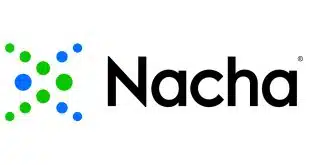City transit systems provide the ideal scenario for contactless payments to take root with U.S. consumers, says Paul Kobos.
If you live in a major metro area, you’re probably intimately familiar with the never-ending pains of public transportation. Whether it’s subways, light rail, buses, or ferries, customer service can be hit-or-miss and infrastructure can be downright outdated. And yet, public transit remains critical for our daily comings and goings.
In parallel, ever since the advent of EMV in the United States, complaints have been reported regarding the speed of more secure payment methods in retail locations. Although superior contactless-payment options have been abundantly available in other regions of the world for several years, slow U.S. uptake on both the issuer and merchant-acceptance fronts has held us back from realizing the true promise of contactless.
Against that backdrop, there’s an emerging glimmer of hope: The intersection of those two less-than-ideal situations provides the perfect proving ground for the killer consumer use case for contactless payments, and it’s been sitting right there under our noses for years. There are quite a few reasons why mass transit serves as the killer use case and why contactless could soon take off in the sector.
All Day, Every Day
Consumers are creatures of habit. Whereas they might alternate among credit card swipes, EMV chip dips, mobile payments, or even checks (seriously!) at various retailers, the vast majority of people using public transit use the same payment method for the same activity every day, probably multiple times each day. This unmatched regularity of using a contactless card, mobile device, or wearable to pay for public transportation every day quickly becomes habit.
Additionally, when traveling to or from work or social engagements, consumers always tend to have their phones with them. That’s not always the case when taking a quick walk down to the grocery store or a drive to the gas station. It’s much less likely that they’d strand themselves without a form of contactless payment and much more likely that they’d turn to a device they’re already carrying and actively using for other mid-commute purposes if it offers payment functionality.
Again, if you’ve ever taken public transit, you know that there are few environments where people are in more of a rush. When technology is introduced to those commutes, it has to work universally and it has to be fast. While one app and payment device can be used in the exact same way across every one of the hundreds of public-transit turnstiles or terminals in a city’s system, the retail world has to contend with overwhelming fragmentation of acceptance terminals and compatible forms of payment.
Tap-and-go payments that take less than a second—as is the norm with contactless—are perfectly suited for on-the-go transactions. Furthermore, low-value transit transactions can be optimized for distance-based fares that are processed while riders are en route and aggregated before being sent to the financial institution. This makes payments process faster for the consumer and more flexible for transit agencies and their service providers.
Open Sesame
Another key benefit for users of contactless payment methods for public transportation is the freedom and flexibility that come along with systems that are designed as open-loop. Usability, centralized access to all modes of transportation, and the overall value of an open-loop contactless transit card or app are compounded in that they are tied into the broader Visa, Mastercard, or other payment-brand network. That can make the same card or app valid for such related expenses as tunnel tolls.
From a security standpoint, open-loop contactless payment systems leverage the globally standardized security features already present in modern mobile devices or dual-interface cards—secure elements, EMV, tokenization, and others—rather than starting from square one and relying on strong security measures needing to be built in to new proprietary, closed-loop systems.
Often, progress is blocked by an unwillingness from any one entity to be the innovative first mover or early adopter. Fortunately, we’ve already passed that sticking point with contactless payment for transit. Even closer to home than standout global examples like Singapore, South Korea, and London, New York’s MTA has been hurtling toward installing a contactless payment system this year. Chicago has offered a card/mobile-payment combo for quite some time. And even midsize markets like Salt Lake City and Portland have rolled out contactless-payment options. With each of those examples, the systems have worked for citizens and they’ve worked for the cities.
Daily transportation fares fall squarely into a bucket of small, low-consideration purchase transactions that would grease the wheels by rapidly boosting consumer confidence in and familiarity with contactless technology and payment behaviors. There’s existing research that supports the idea that small transactions are more likely to create top-of-wallet awareness, in turn driving increased spend for contactless issuers.
The use of contactless payment methods in public transit isn’t a new idea by any stretch. And it’s not as though contactless is going to replace traditional stored-value transit cards overnight. Having said that, to this point, we also may not have been leveraging the use case to its full potential in experimenting with, testing, building, learning about, and expanding contactless-payment systems throughout society and commerce. Once contactless payments leave the public-transit station in earnest, I expect we’ll see more than a few other industries hop aboard to avoid being left behind.
—Paul Kobos is senior vice president of banking and payments at Gemalto North America.





